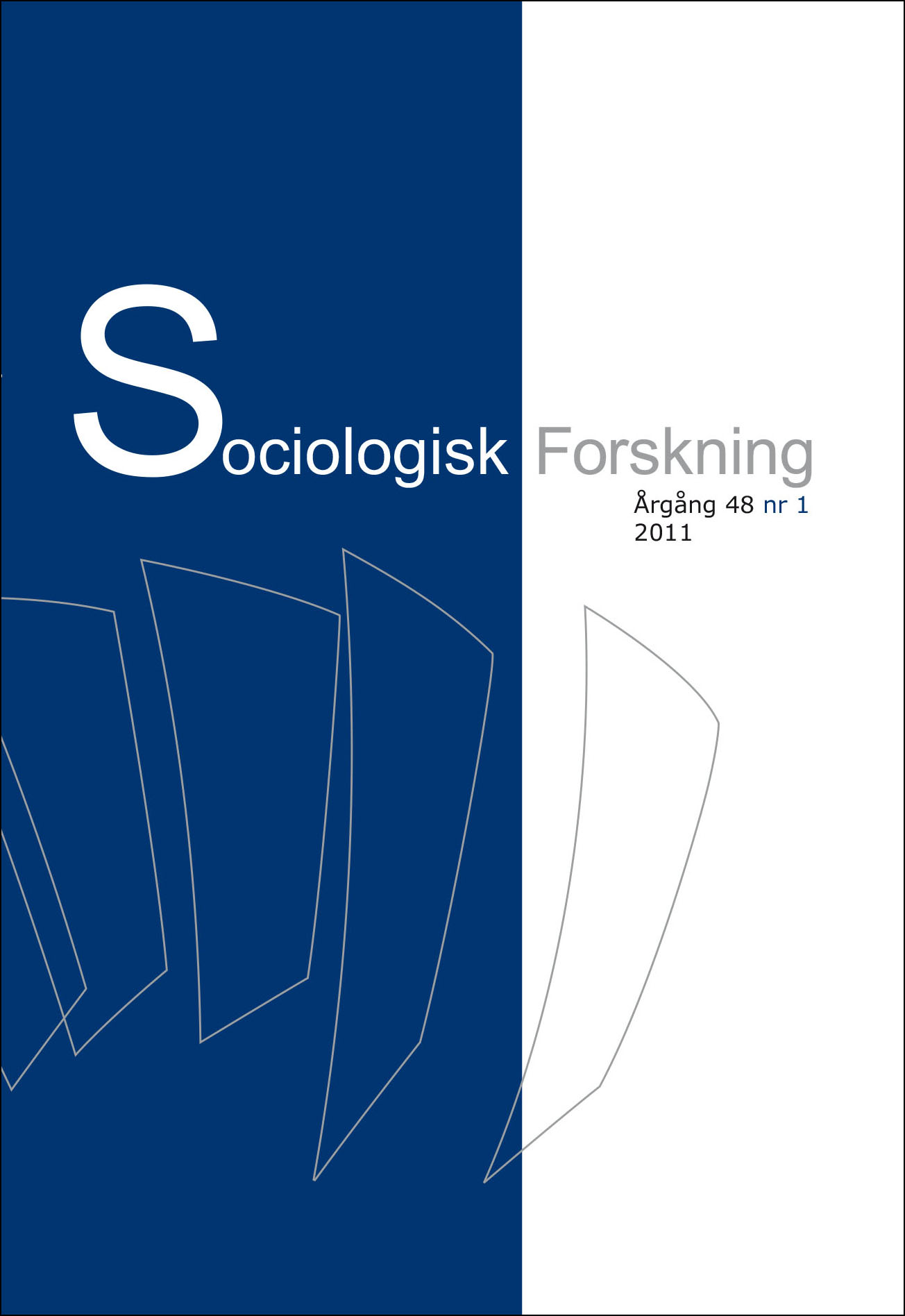Konsensus och personifierade konflikter
problembeskrivningar av äldreomsorg i svensk dagspress
DOI:
https://doi.org/10.37062/sf.48.18417Keywords:
elderly care, mass media, problems, SwedenAbstract
Consensus and personified conflicts: representations of elderly care issues in Swedish newspapers
Elderly care issues are commonly framed in public discourse. In mass media the representations of such issues are influenced by media logic. The purpose of this paper is to describe and analyse how elderly care issues were represented in three Swedish newspapers during the first half of 2007. How were the problems characterized? How were different actors characterized and which roles were they assigned? How are conflicts of interests described? Finally, we aim to discuss how media contribute to an understanding of the complexity of elderly care as a whole.
Taken together, the articles do not provide a coherent picture. However, costs, quality of care and demographic issues were common themes. The elderly were commonly represented in personal narratives about problems that occurred when they needed elderly care. The elderly in the future are projected as more active and demanding than the elderly today. The care workers were active voices in discussions about working conditions, but absent in discussions about their education and professional identity, which was an issue commonly advocated by politicians.
Many issues were represented as conflicts between the individual elderly and the care system or between care workers and their employers. More elaborated discussions about how to prioritize between different needs and demands were rare. This can be seen as examples of how the media tends to use personification, simplification and polarization as means to tell interesting stories.
Downloads
Published
How to Cite
Issue
Section
License
All content in Sociologisk Forskning is published with immediate open access, under the Creative Commons license CC BY-NC-ND 4.0.
All content may be read, downloaded, shared and printed for non-commercial purposes, free and without fees. Contents may not be altered. When content is reused, author, source and a link to the copyright licence must be provided. The author retains copyright to their content. No publication fees are charged.





